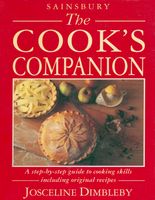Label
All
0
Clear all filters
Decorative Moulds
Appears in
Published 1991
These can transform even the most basic pudding or jellied dish into an ornamental centrepiece. Moulds come in all shapes and designs and are made of many materials: expensive tin-lined copper (handsome enough to be displayed in the kitchen), porcelain, durable stainless steel (suitable for both hot and chilled preparations), earthenware, aluminium (may discolour), tin (may rust), glass (can be fragile), tinned steel and hard plastic. Moulds for cooked dishes must be ovenproof; for chilled dishes, the moulds are best made of thin metal which gets cold quickly and then warms again quickly to unmould easily. Be sure moulds are seamless or they might leak, and that the design has shallow indentations or the food will be difficult to turn out without some sticking to the mould.
Part of
Advertisement
Related Recipes
-
-
-
-
Related Reference
-
-
-
-
Advertisement



